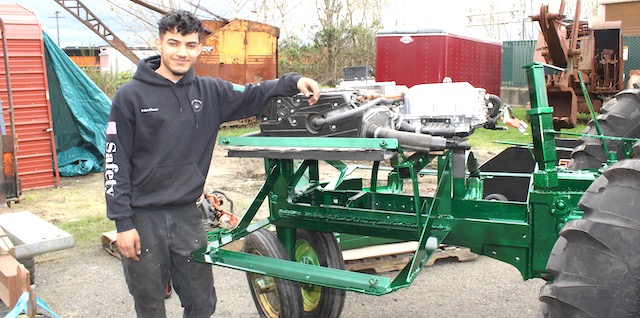Feds: Grizzly bears coming to north-central Washington
Published 9:30 am Friday, April 26, 2024

Young grizzly bears from Rocky Mountain states and British Columbia will be trapped, trucked and delivered by helicopter to national park lands in north-central Washington, the Biden administration announced April 18.
The National Park Service and U.S. Fish and Wildlife Service issued a record of decision, finalizing a yearslong process to reintroduce grizzlies into the North Cascade Range.
The decision confirmed a previously released proposal to build up a population of 200 bears in a region roughly the size of New Jersey in 60 to 100 years. The agencies did not give a timeline for beginning to release bears.
“We are going to once again see grizzly bears on the landscape, restoring an important thread in the fabric of the North Cascades,” North Cascades National Park Superintendent Don Striker said in a statement.
‘Nonessential population’
A grizzly bear has not been seen on the U.S. side of the North Cascades since 1996. The Biden administration revived plans to import grizzles, reversing a decision by the Trump administration.
Trump’s Interior secretary, David Bernhardt, came to Omak in Okanogan County in 2020 and told appreciative ranchers, farmers and local elected officials that federal agencies would not bring grizzlies to their area.
Okanogan County Commissioner Andy Hover, one of the appreciative officials, said he doubts the federal government will reverse course again.
“I don’t see a new administration fighting an uphill battle over this, not with all the issues that would be on a new president’s plate,” he said.
Grizzlies imported to the North Cascades will be designated a “nonessential experimental population” under the Endangered Species Act. The designation allows for the lethal control of grizzlies that come into conflict with people or livestock.
The designation will help, Hover said. “I don’t like the decision, but I like there will be tools in the toolbox to manage them,” he said.
Park preferred destination
The agencies plan to import three to seven bears a year for five to 10 years. The agencies expect some bears will die or leave the region, so they anticipate having to release 36 bears to establish an initial population of 25.
The preferred destination will be North Cascades National Park, though bears could also be inserted into national forests. Signs will be posted at trailheads warning hikers they are entering bear habitat.
The agencies plan to relocate grizzlies that have not reproduced. Most bears are expected to survive the move, though they will risk being stressed by being captured and handled and discomforted by ill-fitting collars, according to the record of decision.
Federal agencies reintroduced wolves to Central Idaho and Yellowstone National Park in 1995 and underestimated future populations.






